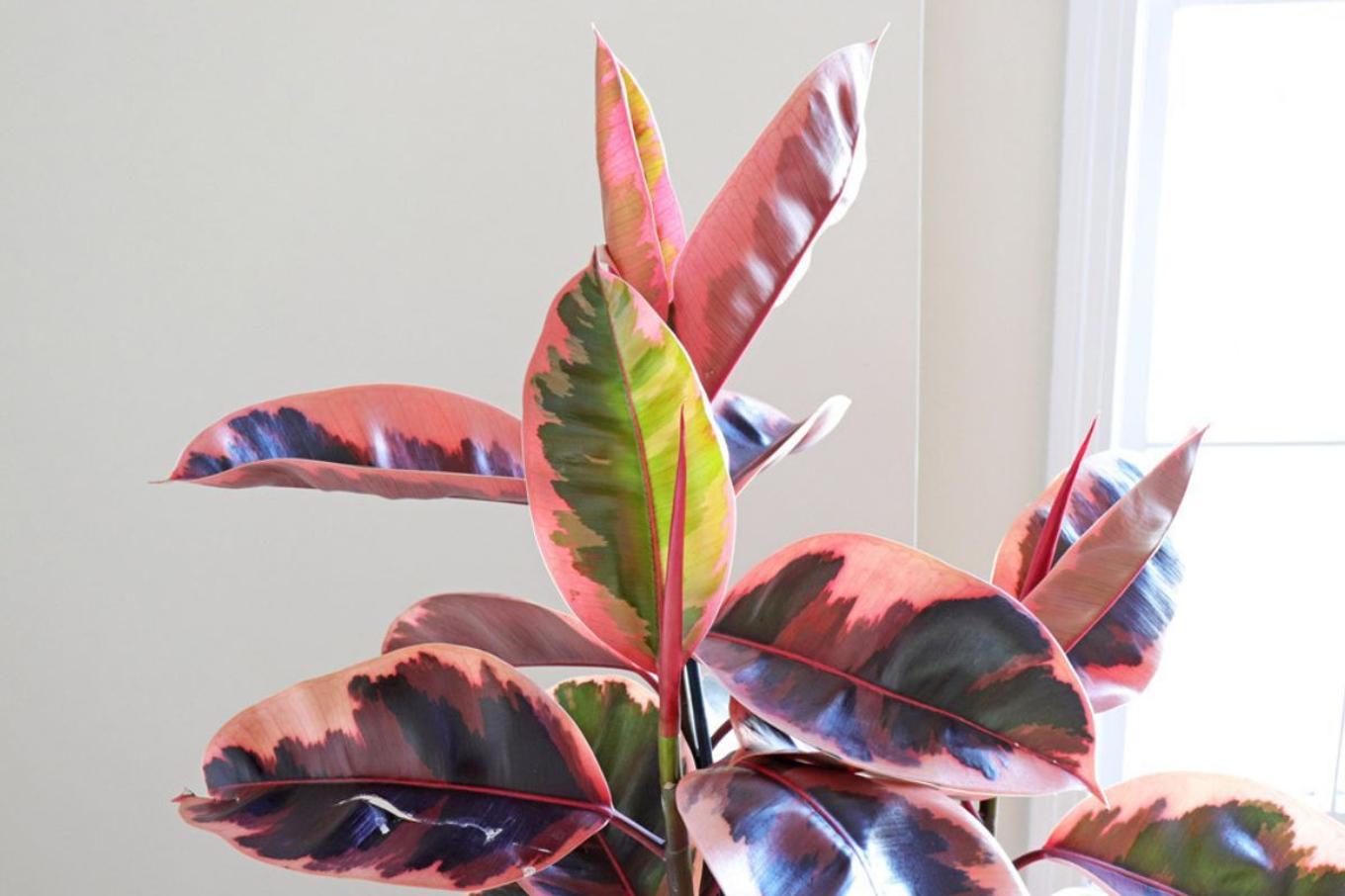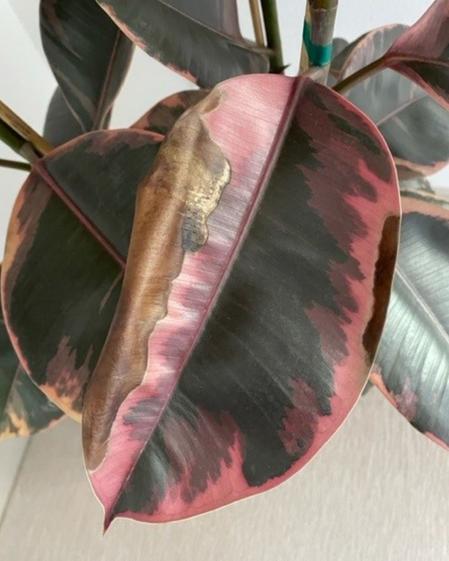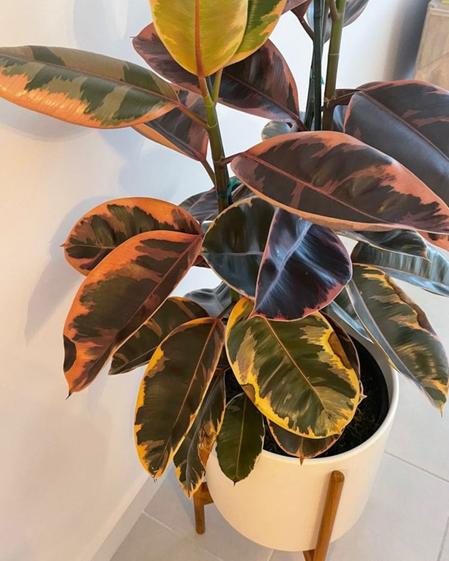{{ this.results.length }} Results
Your search for {{ this.pattern }} didn't return any results.
Ruby Rubber Tree Care Guide

Striking and bold, the Ruby Rubber Tree (Ficus Elastic Ruby) is a variegated showstopper known for its glossy leaves streaked with shades of pink, cream, and green. This vibrant cousin of the classic rubber tree brings color and structure to any space while remaining relatively easy to care for. With the right light and a little attention, its blushing foliage will thrive and impress.
Simple Care Instructions for the Ruby Rubber Tree
Light Requirements
The Pink Rubber Tree thrives in bright, indirect light, which is essential for maintaining its dramatic variegation. Without enough light, the pink and cream tones can fade.
Place near bright window where it gets several hours of filtered sunlight per day. Avoid harsh direct sun, which can scorch the leaves.
Watering Needs
With the Pink Rubber Tree, it's best to be consistent with your watering routine! Allow the top 2–3 inches of soil to dry out between waterings. Water thoroughly until it drains from the bottom, then discard excess water in the saucer. Be careful not to overwater as this plant is sensitive to root rot.
In winter, reduce watering frequency, as growth slows and the plant uses less moisture.
Humidity and Temperature
Pink Rubber Trees are adaptable but prefer*moderate to high humidity. Dry indoor air can lead to browning edges, so mist occasionally or place near a humidifier, especially during winter months.
Keep temperatures between 65–80°F (18–27°C). Avoid cold drafts and sudden drops in temperature, which can cause leaf drop.
Soil and Repotting
Use a well-draining indoor potting mix to avoid moisture build up.
Repot every ~2 years in the spring to refresh the soil and give the roots more space to grow. Ruby Rubber Trees like to be slightly root-bound, so don’t size up the pot too drastically.
Common Problems and Troubleshooting Tips
Faded Leaves – Insufficient Light
Symptoms: Loss of pink variegation; leaves turn pale.
Cause: Not enough light.
Solution: Move to a brighter location with indirect sunlight.
Brown Leaf Edges – Underwatering or overwatering
Symptoms: Brown edges of leaves
Cause: Most likely overwatering, though it could also be a sign of underwatering.
Solution: Determine the environmental factor causing the stress. Either soak in water if underwatered, or remove from pot and inspect the roots if overwatered. If the plant has been overwatered, you may need to remove damaged roots and repot.
Drooping Leaves – Usually underwatering
Symptoms: Leaves appear limp or saggy.
Cause: Could be due to underwatering.
Solution: Give it a good soak in a few inches of water, allowing it to drink from the bottom up.
***Leaf Bleeding Sap – Simple Leaf Injury ***
Symptoms: White sap leaking from leaves
Cause: A cut in the leaf.
Solution: Rubber Trees get their name from the sticky sap within their leaves, which was once used to make rubber. If a leaf is broken or otherwise cut open, it will leak a sticky sap. While it is harmless, it can cause mild skin irritation so it's best not to touch out. There is nothing to do beyond carefully cleaning the affected area and letting it dry out.

Brown edges often indicate overwatering

This Ruby Rubber Tree began to decline after being placed too far from a light source.
Seasonal Care Tips
In spring and summer, your Ruby Rubber Tree may grow more quickly. This is a great time to rotate the plant occasionally to encourage even growth and prevent it from leaning toward the light.